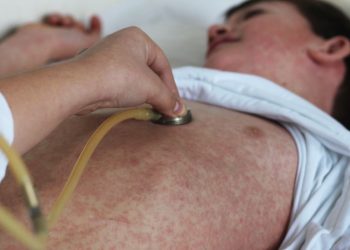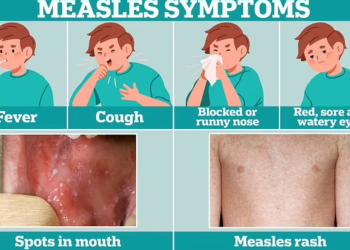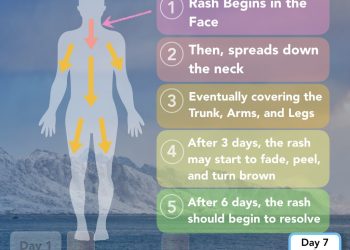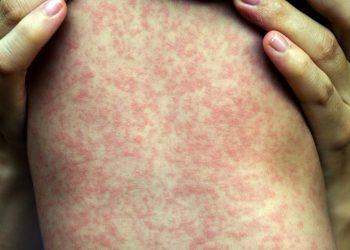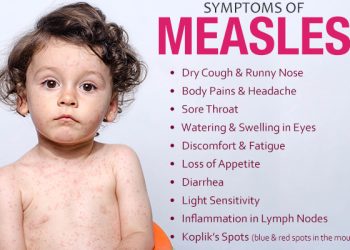Treating a Rash Around Eyes
Welcome to your comprehensive guide on dealing with a rash around the eyes. This discomforting condition can be caused by various factors, including allergies, irritants, infections, or underlying skin conditions. In this article, we’ll dive into the common causes, symptoms, and effective treatments for eye rashes. Knowledge is your first step toward relief and healthier skin.
What Causes a Rash Around the Eyes?
Eye rashes can be triggered by a multitude of factors, and understanding these causes is essential for effective management. Let’s explore some of the common culprits behind those irritating rashes:
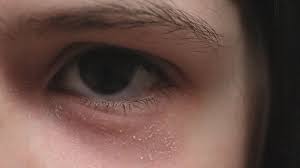
rash around eyes
Allergies:
Allergic reactions are a prevalent cause of eye rashes. Pollen, pet dander, certain foods, or cosmetics can trigger allergic responses leading to redness, itching, and swelling around the eyes.
Irritant Contact Dermatitis:
Your eyes are sensitive, and exposure to irritants like harsh soaps, shampoos, or cosmetics can lead to contact dermatitis. This results in red, itchy, and often painful rashes.
Infections:
Contagious eye infections like conjunctivitis (pink eye) or styes can cause inflammation and discomfort around the eyes. Infections can easily spread from person to person or from one eye to the other.
Identifying Symptoms and Types of Eye Rashes
Eye rashes can manifest in various ways, and recognizing their symptoms is the first step in proper diagnosis and treatment. Here, we’ll discuss common symptoms and the different types of eye rashes you might encounter:
Common Symptoms:
Redness: One of the most noticeable signs of an eye rash is redness around the eyes, often accompanied by irritation.
Itching: Persistent itching can be a frustrating symptom and may lead to further discomfort.
Swelling: Swelling around the eyes, known as periorbital edema, can cause puffiness and tenderness.
Pain: Some eye rashes can be painful, particularly those associated with infections like styes.
Types of Eye Rashes:
Allergic Reactions:
Allergic eye rashes typically involve redness, itching, and swelling in both eyes. They often occur after exposure to allergens like pollen, dust mites, or pet dander.
Irritant Contact Dermatitis:
This type of rash is localized to the area where the irritant made contact. Symptoms include redness, itching, and sometimes burning or stinging.
Eye Infections:
Infections like conjunctivitis may cause redness, discharge, and discomfort in one or both eyes. Styes, on the other hand, are characterized by painful, swollen bumps near the eyelashes.
Allergic Reactions: Is It Allergies?
Allergic reactions are a prevalent cause of eye rashes, and they can occur in response to various allergens. Here, we’ll take a closer look at allergic eye rashes:
Common Allergens:
Pollen:
Seasonal allergies, also known as hay fever or allergic rhinitis, can trigger eye rashes when pollen counts are high.
Pet Dander:
If you have furry companions, their dander can lead to allergies and itchy, red eyes.
Cosmetics:
some individuals may be sensitive to cosmetics, particularly eye makeup, leading to allergic reactions.
Food Allergies:
Certain foods can cause allergic reactions that manifest as eye rashes.
Symptoms of Allergic Eye Rashes:
Itching: Persistent itching is a hallmark symptom of allergic eye rashes.
Redness: The whites of your eyes may become red and bloodshot.
Watery Eyes: Excessive tearing can be a reaction to allergens.
Swelling: Allergic reactions can lead to periorbital swelling or puffiness around the eyes.
Preventing Allergic Eye Rashes:
Identify Allergens: Determine the specific allergen triggering your symptoms and take steps to avoid it.
Allergy Medications: Over-the-counter or prescription allergy medications can provide relief.
Eye Drops: Antihistamine eye drops can alleviate itching and redness.
Skin Conditions and Eye Rashes
Some underlying skin conditions can contribute to the development of eye rashes. It’s important to recognize these conditions and understand their impact on your eye health:
Eczema (Atopic Dermatitis):
Symptoms:
Eczema can lead to dry, itchy, and inflamed skin, including the skin around the eyes.
Management:
Emollients and topical corticosteroids are commonly used to manage eczema symptoms. Consult a dermatologist for personalized treatment.
Psoriasis:
Symptoms:
Psoriasis can cause red, scaly patches of skin, and in some cases, it may affect the eyelids and the area around the eyes.
Management:
Treatments for psoriasis vary but may include topical treatments, phototherapy, or systemic medications.
Rosacea:
Symptoms:
Rosacea can lead to redness and visible blood vessels on the face, including the eye area.
Management:
Dermatologists can provide therapies like topical creams and laser treatments to manage rosacea.
Diagnosis and Medical Evaluation
When you develop a rash around your eyes, it’s crucial to seek a professional medical evaluation. Here’s what you can expect during the diagnostic process:
Consultation with a Healthcare Provider:
Your healthcare provider will ask about your symptoms, medical history, and any recent exposures or allergies.
They will perform a physical examination, focusing on the affected area.
Diagnostic Tests:
In some cases, diagnostic tests may be necessary to determine the underlying cause. These tests can include skin patch testing, blood tests, or cultures for infections.
Differential Diagnosis:
A differential diagnosis helps healthcare providers rule out other potential conditions that may present with similar symptoms.
Treatment Planning:
Based on the diagnosis, your healthcare provider will recommend a treatment plan tailored to your specific condition.
Home Remedies and Self-Care
For mild cases of eye rashes, there are several home remedies and self-care practices you can adopt to alleviate symptoms:
Warm Compresses:
Applying warm compresses to the affected area can help reduce itching and redness. Use a clean, damp cloth and gently place it over your closed eyes.
Hygiene Practices:
Maintain good eye hygiene by avoiding touching or rubbing your eyes. Wash your hands frequently, especially if you suspect an infection.
Artificial Tears:
Over-the-counter artificial tear drops can help keep your eyes moist and relieve dryness and discomfort.
Avoiding Allergens:
If allergies are the cause of your eye rash, take steps to minimize exposure to allergens. Keep windows closed during high pollen seasons and use allergen-proof covers on pillows and mattresses.
Stay Hydrated:
Drinking enough water can help maintain overall skin and eye health. Proper hydration can contribute to reducing skin dryness.
Medical Treatments
In cases of moderate to severe eye rashes, or when home remedies aren’t providing sufficient relief, medical treatments may be necessary. Here are some common medical interventions:
Topical Steroids:
Healthcare providers may prescribe topical corticosteroids to reduce inflammation and alleviate itching. It’s important to use these medications as directed.
Antibiotics:
If your eye rash is caused by a bacterial infection, such as bacterial conjunctivitis, antibiotics may be prescribed to clear the infection.
Antiviral Medications:
For viral infections, antiviral medications may be recommended. These medications can help manage symptoms and reduce the duration of the infection.
Allergy Medications:
Antihistamines, either oral or in the form of eye drops, can be effective in relieving allergy-related eye rashes.
Immunosuppressants:
In cases of severe skin conditions contributing to eye rashes, immunosuppressant medications may be prescribed to manage symptoms.
Surgical Interventions:
For conditions like styes or chalazia that don’t respond to other treatments, minor surgical procedures may be performed to drain the affected area.
Prevention: Keeping Your Eyes Rash-Free
Preventing eye rashes involves both lifestyle adjustments and proactive measures to minimize triggers. Here are some key prevention strategies:
Avoid Allergens:
Identify and avoid allergens that trigger your eye rashes, such as pollen, pet dander, or specific foods. Monitor pollen counts and use air purifiers if necessary.
Eyewear Protection:
When working outdoors or in dusty environments, wear protective eyewear to prevent irritants from coming into contact with your eyes.
Proper Eye Hygiene:
Maintain good eye hygiene by avoiding eye rubbing and washing your hands frequently. Clean your eyeglasses and contact lenses regularly.
Skin Care:
If you have underlying skin conditions like eczema or psoriasis, adhere to a skincare routine recommended by your dermatologist to prevent flare-ups around the eyes.
Stay Hydrated:
Drink an adequate amount of water to keep your skin and eyes hydrated. Proper hydration can reduce the risk of dry, irritated skin.
FAQs and their corresponding answers related to eye rashes:
FAQ 1: What causes eye rashes?
Answer: Eye rashes can be caused by various factors, including allergies, irritants, infections, or underlying skin conditions. Identifying the specific cause is essential for effective treatment.
FAQ 2: Are eye rashes contagious?
Answer: It depends on the underlying cause. Viral and bacterial eye infections, such as conjunctivitis, can be contagious, while eye rashes due to allergies or irritants are not contagious.
FAQ 3: Can eye makeup cause eye rashes?
Answer: Yes, eye makeup or makeup removers with irritating ingredients can lead to eye rashes, particularly if you have sensitive skin.
FAQ 4: How can I relieve itching from an eye rash?
Answer: Applying a clean, damp, warm compress to the affected area can help alleviate itching. Over-the-counter antihistamine eye drops may also provide relief for allergy-related itching.
FAQ 5: Is it safe to use over-the-counter steroid creams for eye rashes?
Answer: It’s not recommended to use steroid creams near the eyes without medical guidance. Steroids can have side effects and should be used as prescribed by a healthcare provider.
FAQ 6: What’s the difference between pink eye and a stye?
Answer: Pink eye (conjunctivitis) is an eye infection that causes redness, discharge, and discomfort. A stye, on the other hand, is a painful lump near the eyelashes caused by a blocked oil gland.
FAQ 7: Can eczema on the face lead to an eye rash?
Answer: Yes, eczema (atopic dermatitis) can affect the skin around the eyes, leading to an eye rash. Proper skin care and management of eczema are essential.
FAQ 8: How can I prevent eye rashes caused by allergies?
Answer: Preventing allergic eye rashes involves identifying and avoiding allergens, using allergen-proof pillows and mattress covers, and considering antihistamine medications under medical guidance.
FAQ 9: When should I see a doctor for an eye rash?
Answer: It’s advisable to see a doctor if you experience severe or persistent symptoms if your vision is affected, or if you suspect an eye infection.
FAQ 10: Can contact lenses cause eye rashes?
Answer: While contact lenses themselves may not cause eye rashes, improper hygiene, or wearing lenses for extended periods can increase the risk of eye infections, which can lead to eye rashes. Proper care and cleaning of contact lenses are crucial.
Conclusion
In conclusion, a rash around the eyes can be uncomfortable and concerning, but understanding the causes, symptoms, and available treatments empowers you to manage this condition effectively. Whether your eye rash is due to allergies, irritants, infections, or underlying skin conditions, seeking timely medical advice and adopting preventive measures are key to keeping your eyes rash-free and maintaining optimal eye health.
